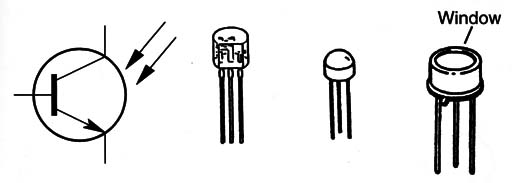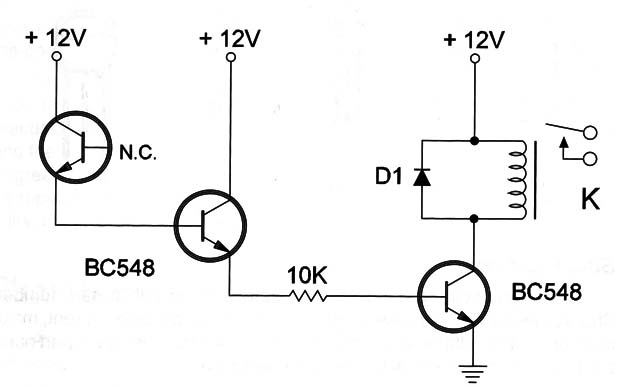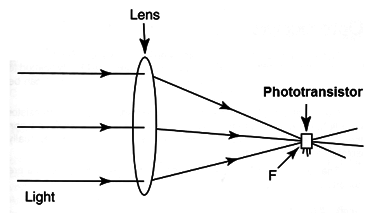As in diodes, the junctions of a transistor are sensitive to Iight.
If the junctions of a common transistor are exposed to Iight, the current rowing through the component changes and it can be used as a sensor.
The current flow between collector and emitter can be controlled by the amount of Iight faIIing onto the device.
By mounting the siIicon chip of a transistor inside a transparent enclosure or an enclosure with a window to Iet the Iight fall onto it, it becomes an important electronic device-the phototransistor.
Phototransistors are used the same way as the photodíodes-as sensors in many electronic applications.
One important aspect of phototransistors when compared with LDRs is that they can be used to detect very fast changes in the Iight intensity.
Symbol and Types
Figure 1 shows the symbol adopted to represent the phototransistor and a few types.

The phototransistor can “see” Iight invisible to the human eyes.
They can be used to detect both IR (infrared) and, in some cases, UV (uItravioIet).
Specifications
The manufacturers mark their phototransistors with a part number.
Characteristics such as wavelength response, gain, collector current, maximum operating voltage, and others must be found from using the part number to consult the manufacturers documentation.
A common series of phototransistors are the one made by Texas Instruments.
The first Ietters (TIL) indicate that it is an optoelectronic device and the next number indicates a special type.
Examples of these part numbers are TIL81 and TIL411.
The same initial Ietters are used to indicate other components working with Iight, such as LEDs and optocouplers.
Where and how they are used
The reader will find phototransistors in many applications related to professional activities. In fact, alarms, motion detectors, remote controls, and many other applications use the phototransistor as a sensor.
Because the phototransistor is much faster than the LDRs, they have different uses.
The reader will find the LDR in light detectors where the changes or amount of light are slow as in emergency lights and automatic nightlights.
In the applications where fast changes of light must be detected or where information must be sent through a light beam (visible or not) the photodiode and the phototransistor are preferred.
In a typical application the phototransistor is used as a diode, as shown in Figure 2.

In the circuit the base terminal is let free and the component acts as a photodiode.
The current flowing between emitter and collector depends on the light picked up by the device. In many cases, although the component is a transistor, the package doesn’t present the base terminal.
In order to increase the amount of light picked up by a phototransistor a lens can be placed in front of the transistor. It is important to place the transistor in its focus as shown in Figure 3.

A typical application of a phototransistor and an infrared LED is shown in Figure 4.

The infrared LED sends a light beam that is focused on the phototransistor. If the light beam is interrupted (cut by an intruder) the circuit detects the cut and triggers an alarm.
In this site the reader will find many circuits using phototransistor as sensors.



